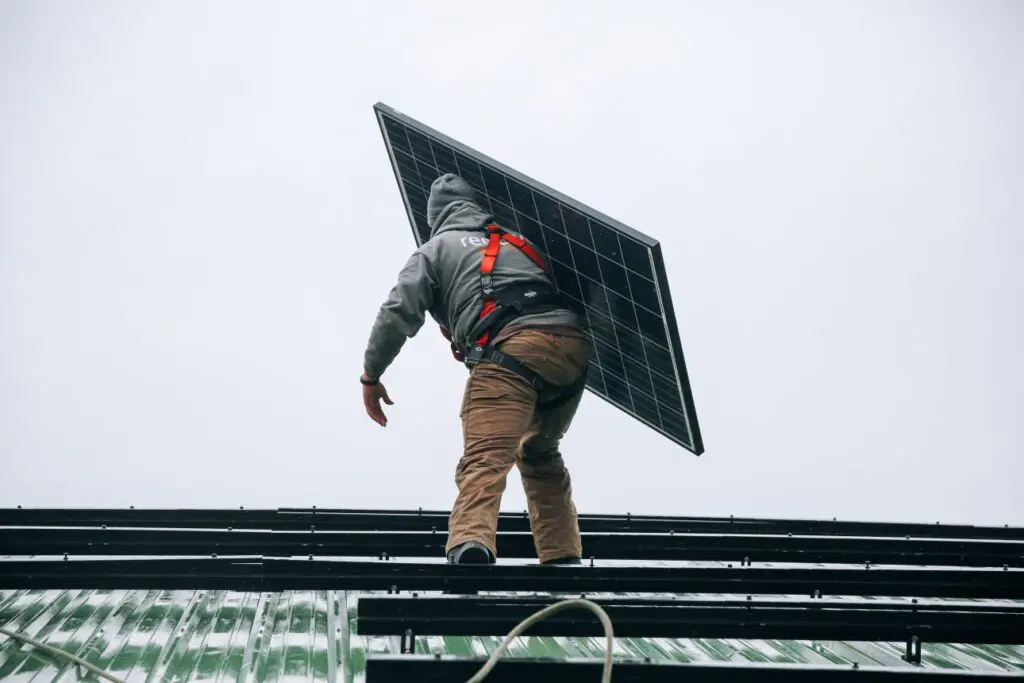Without the domestic capacity, this new measure will instead drive up costs, delay critical infrastructure, and undermine the clean energy transition
By Vittoria Bellissimo and Fernando Melo
A well-intentioned tariff policy is about to create serious problems. Renewable energy projects worth billions of dollars are at risk. Indigenous and local communities could lose major economic opportunities. And building the electricity infrastructure Canada needs will become significantly more expensive.
On Nov. 26, the federal government announced a sweeping 25-per-cent tariff on imported wind towers and other steel-based products. The goal is to strengthen domestic manufacturing in response to United States trade pressure. Prime Minister Mark Carney has said Canada must become its own best customer. This is a worthy ambition Canadians can rally behind, and the Canadian Renewable Energy Association (CanREA) has been advocating for two years for a bonus under the Clean Economy Investment Tax Credits for companies buying made-in-Canada components.
But without the domestic capacity, this tariff will instead drive up costs, delay critical infrastructure, and undermine the clean energy transition Canada needs to remain competitive.
This policy needs an urgent overhaul. Here’s why:
- Domestic manufacturing cannot meet demand. Canada does not have the wind turbine manufacturing capacity needed to power its economy from coast to coast. The Canadian International Trade Tribunal confirmed this in 2023: logistics make it nearly impossible to ship turbines built in Quebec further west than Ontario. Tariffs may eventually incentivize new manufacturers, especially if they are coupled with bigger tax credits for Canadian-made cleantech. But without industry input and a phased approach, they will raise costs and risk current project execution in the short term.
- Tariffs slow the race to electrify. Canada needs to build the electricity infrastructure needed for tomorrow’s economy, including electric vehicles, data centres, the mining industry, and clean manufacturing. Wind energy is one of the fastest, least expensive options available. But a tariff on wind turbine towers will add tens of millions of dollars to individual project costs, and these extra costs flow directly to those who pay for electricity: families and businesses. Even major industrial consumers like steel producers will face higher power costs—hardly an incentive for the new domestic manufacturing the tariff is supposed to create.
- Risk and uncertainty drive away investment. Renewable developers plan supply chains years in advance. Towers and components ordered long ago under existing trade rules now face a sudden 25-per-cent tariff. That means cost overruns of tens of millions of dollars per project, potential project cancellations, and job losses. Indigenous and local communities who are equity partners and co-owners in renewable projects will bear these impacts directly. Meanwhile, major electricity procurements in Ontario and British Columbia have deadlines in December and January. Contracts have been signed across the country with utilities, governments, and system operators. Developers cannot redesign billion-dollar projects on a month’s notice. The federal government must establish a remission process to exempt projects that are already contracted, under construction or in the final stages of approval.
- Tariffs may backfire on supply chain goals. Instead of encouraging domestic production, these tariffs could push buyers toward cheaper Asian tower and product suppliers despite higher shipping costs, rather than European manufacturers. That concentrates supply chains rather than diversifying them—an unintended consequence that undermines the resilience the government needs.
The fix is straightforward: consult industry before implementing tariffs, phase them in responsibly, exempt projects already contracted or under construction, and protect Indigenous partners who planned investments in good faith.
Canada can be its own best customer, but not by kneecapping the industries trying to build our energy future. This tariff won’t put Canadians back to work, and it won’t create new jobs.
Carney’s ambition is right. But ambition without careful execution backfires, and implementation details matter. We can choose Canadian steel, but we cannot create a market overnight.
The government must overhaul this steel tariff policy now.
Vittoria Bellissimo is president and CEO of CanREA, leading a member association focused on ensuring that wind energy, solar energy, and energy storage play a central role in transforming Canada’s energy mix.
Fernando Melo is CanREA’s senior director of public affairs and federal policy, leading federal advocacy work, and supporting members on federal government engagement priorities.
This piece was originally published in the Opinion section of The Hill Times on December 10, 2025.


